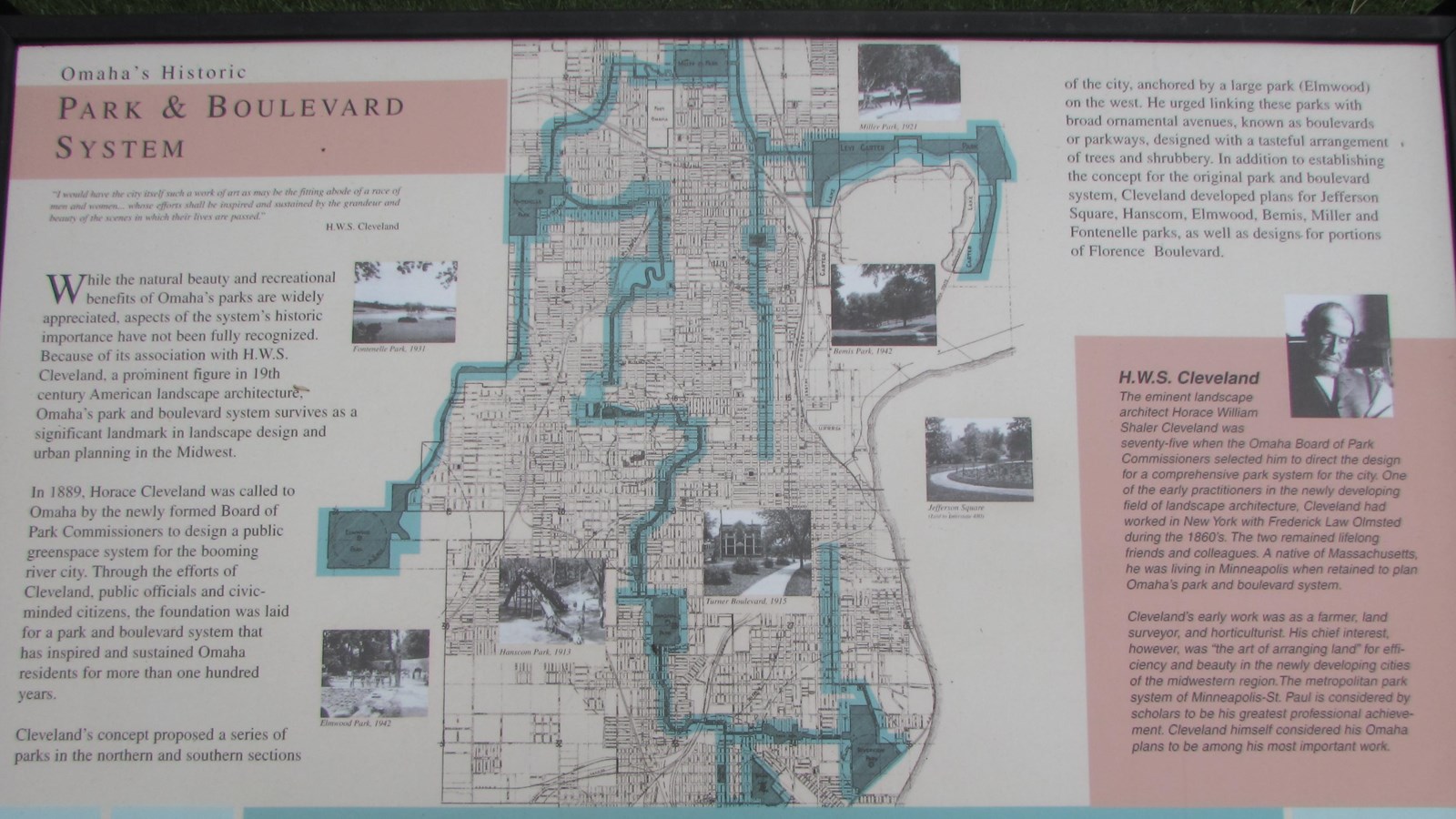Last updated: September 6, 2022
Place
Omaha Park and Boulevard System

David Calease, NPS
Quick Facts
Location:
Includes approximately 26.5 miles of roads and 1,650 acres of park land throughout Omaha
Significance:
Landscape Architecture; Community Planning & Development; Entertainment/Recreation
Designation:
National Register of Historic Places
MANAGED BY:
City of Omaha
The Omaha Park and Boulevard System includes approximately 26.5 miles of roads and 1,650 acres of park land throughout the city of Omaha that are listed in the National Register of Historic Places. Developed between 1889 and 1918, the design for the system was conceived by noted landscape architect H.W.S. Cleveland who had previously worked with Frederick Law Olmsted on Prospect Park in Brooklyn, New York. As Omaha expanded during the last quarter of the nineteenth century, the city began to plan and design amenities that would enhance the quality of life experienced by its residents – this included designing and building a park and parkway system. Such a system was advocated for by local leaders and would counter the industrial image of the city perpetuated by stockyards, meatpacking, and railroading.
Omaha Park and Boulevard System is truly a grassroots initiative sponsored by the people of Omaha. Local leaders pushed for the establishment of a Park Commission, and much of the acreage for these new parks was purchased by funds through a $400,000 bond issue passed by Omaha voters in 1891. Although Cleveland was forced to withdraw from the project due to health concerns in 1894, the Park Commissioners were able to carry out his broad overall vision for the park and boulevard system.
Of the many parks and boulevards that contribute to the overall system. Hanscom, Elmwood, Bemis, Miller and Fontenelle Parks and Fontenelle Boulevard date to Cleveland’s involvement between 1889 and 1894. These original parks were further developed, and additional parks and boulevards were planned and constructed from 1895 to 1918, by which time most of the park and boulevard system was completed. Since this time, the City of Omaha has remained dedicated to an ongoing tradition of developing additional parks. Notable Omaha parks of more recent origin include the Gene Leahy Mall and Heartland of American Park in downtown Omaha, Lewis and Clark Landing, the Bob Kerry Bridge over the Missouri River, Memorial Park in Dundee and Zorinksy Lake Park, one of the several that ring the periphery of the city.
Omaha Park and Boulevard System is truly a grassroots initiative sponsored by the people of Omaha. Local leaders pushed for the establishment of a Park Commission, and much of the acreage for these new parks was purchased by funds through a $400,000 bond issue passed by Omaha voters in 1891. Although Cleveland was forced to withdraw from the project due to health concerns in 1894, the Park Commissioners were able to carry out his broad overall vision for the park and boulevard system.
Of the many parks and boulevards that contribute to the overall system. Hanscom, Elmwood, Bemis, Miller and Fontenelle Parks and Fontenelle Boulevard date to Cleveland’s involvement between 1889 and 1894. These original parks were further developed, and additional parks and boulevards were planned and constructed from 1895 to 1918, by which time most of the park and boulevard system was completed. Since this time, the City of Omaha has remained dedicated to an ongoing tradition of developing additional parks. Notable Omaha parks of more recent origin include the Gene Leahy Mall and Heartland of American Park in downtown Omaha, Lewis and Clark Landing, the Bob Kerry Bridge over the Missouri River, Memorial Park in Dundee and Zorinksy Lake Park, one of the several that ring the periphery of the city.
